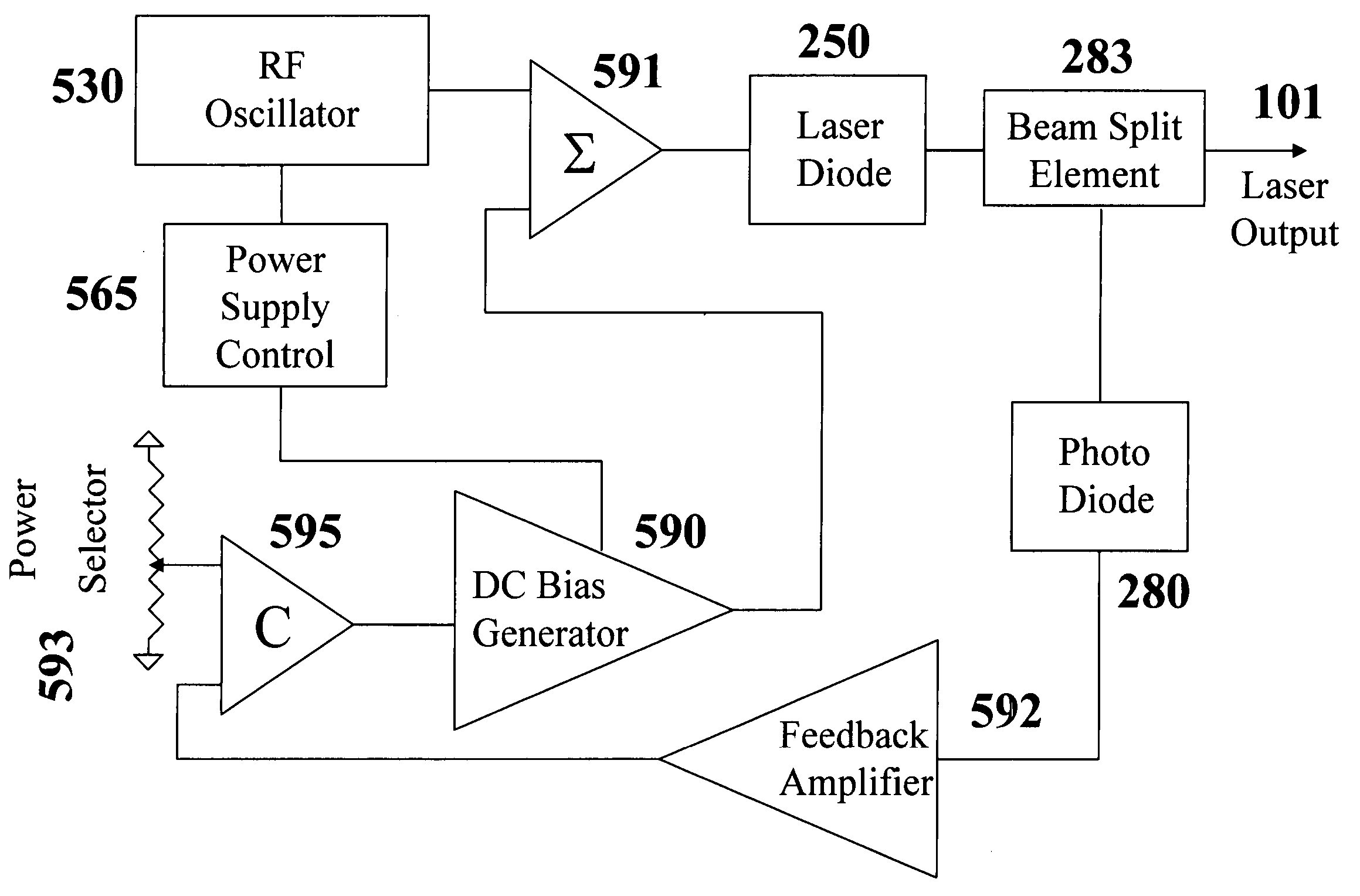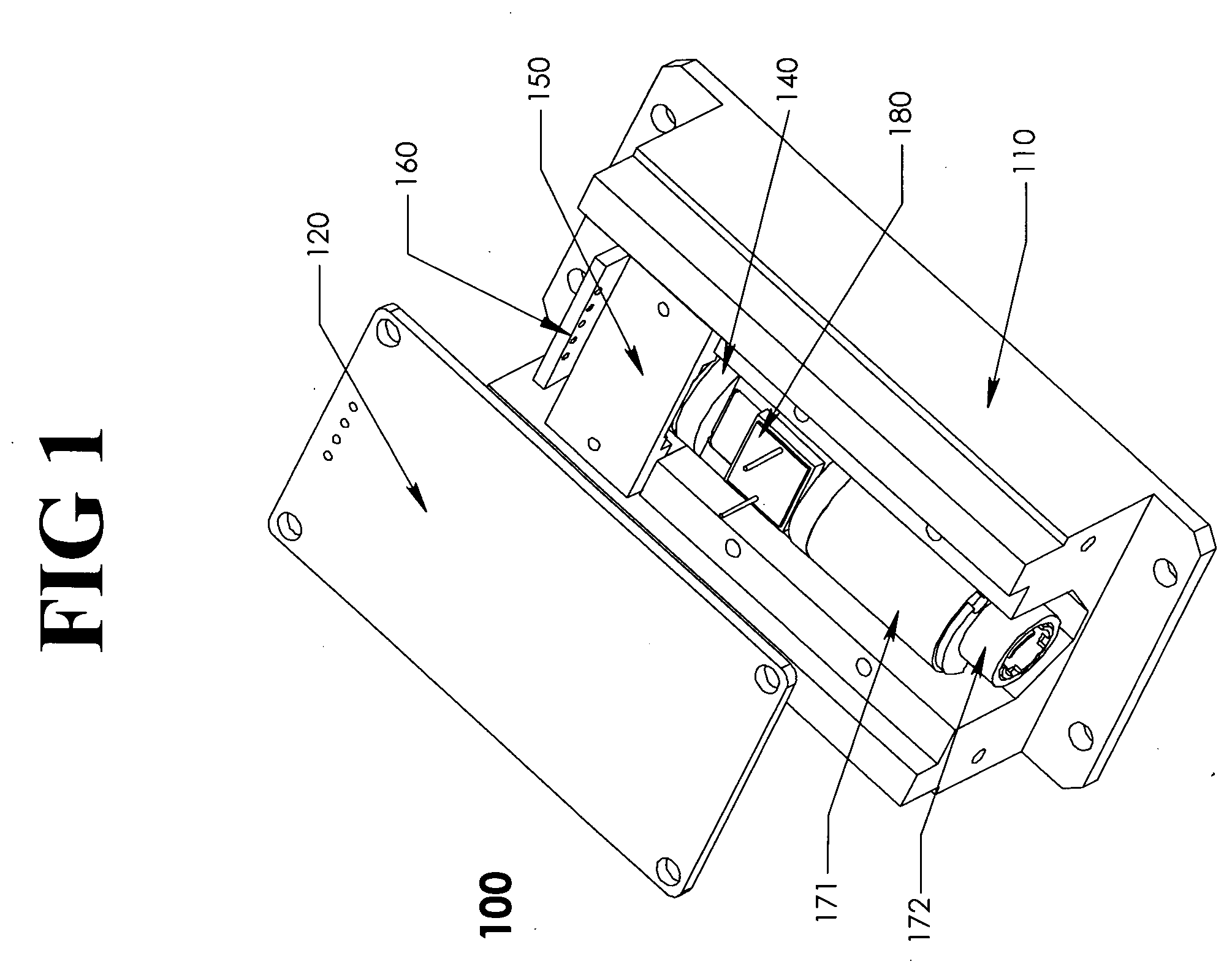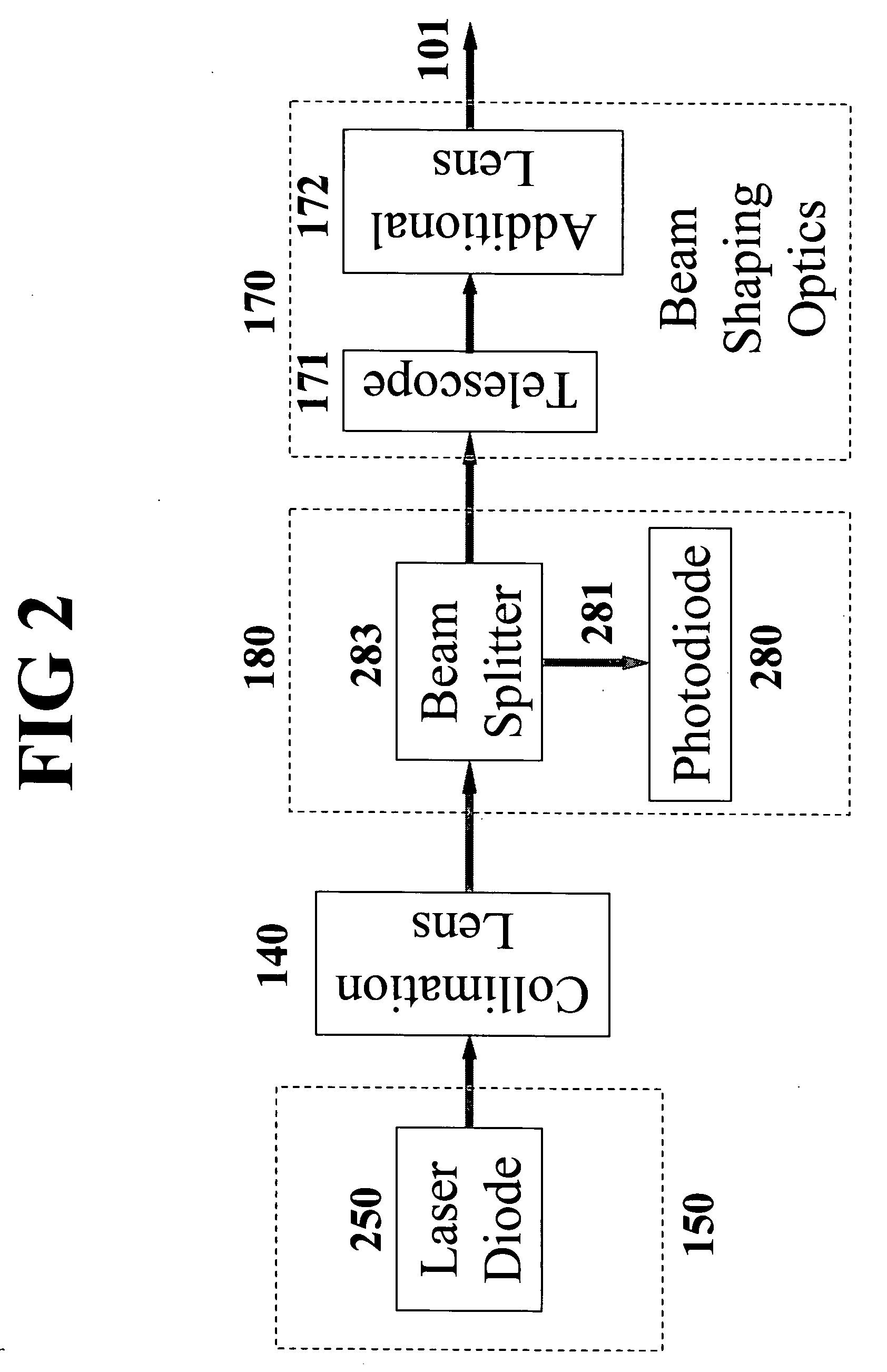In videodisk systems,
mode hopping causes variations in the location of data written to the optical disk because dispersion causes variations in
beam direction and reduces the signal-to-noise ratio, which degrades the quality of the picture derived from the disk.
In laser raster printing systems, objectionable artifacts, such as streaks and spots, due to unwanted variations in laser energy delivered to photosensitive media can significantly deteriorate the
image quality.
When used as seed lasers or pump sources for
laser diode pumped
solid-state lasers (generally referred as DPSS lasers) or optical parametric oscillators / amplifiers (OPO / OPA) or
fiber amplifiers / lasers, laser diodes may transfer their
optical noise, whether due to intensity or wavelength, to the target laser, causing
population inversion fluctuation.
This conventional control method, however, has only limited effects on stabilizing laser
optical power due to, e.g., ineffectiveness to fast fluctuations and changes in characteristics of some components associated with
laser diode aging.
In addition, thermoelectric controller is complex and relatively expensive.
The limitation of this method includes ineffectiveness in prevention of
laser diode from
mode hopping or mode partitioning and possible artifacts introduced by parameter shifts with age.
Additional artifacts may be induced when back
facet photodiodes are utilized for detecting laser output power, which is, unfortunately, the conventional sensing method at present.
It is generally susceptible to operational conditions such as temperature and diode injection current.
Another unstable factor is optical feedback, that is, any unwanted light reflected back into a laser
system by beam forming / shaping
optics, laser crystals, or any other optical elements external to the laser.
Optical feedback is a persistent problem for laser diodes.
In order to produce a well-collimated beam, additional
optics is needed, which will inherently cause reflections and feedback.
Optical feedback can disturb laser diode
operation mode via depopulation of certain lasing levels of the
gain medium and change of the
gain threshold, deteriorate coherence, and cause fluctuations in intensity and wavelength.
Over the
operating life, some parameters may shift, causing control components, e.g. thermoelectric controllers, ineffective.
In a DPSS laser,
optical noise of the pump diodes may cause
instability of the
solid-state laser through fluctuations in the pumping intensity and / or wavelength, as well as optical feedback.
This is particularly true for a laser
gain medium with a narrow
absorption band: a shift in diode output wavelength, as a result of, e.g., mode hop, may lead to spectral mismatching of the pumping source with the gain medium.
These
instability problems cannot be completely solved by means of conventional automatic temperature
feedback control and optical power feedback close
loop control or laser drive current control.
Such laser diode systems usually have relatively large sizes, high costs, less robustness, and require of sophisticated laser current and
temperature control, which are not suitable to many original equipment manufacture (OEM) customers.
Another inherent drawback of the method relates to its ineffectiveness when the pass band of the wavelength selection element is broader than the interval between two adjacent wavelengths of the laser diode Fabry-Perot
modes.
With repeated on-off operation at
high frequency, the laser operates in
multiple modes because there is not enough time for the completion of mode competition.
Unfortunately, due to the sine waveform of the RF drive current, this type of stabilization schemes allows only 50%
duty cycle.
It is not suitable to
high power lasers because this would overdrive the laser and decrease its lifetime.
In extreme cases, there is a possibility for the power supply to back-bias the laser diode and even destroy it.
Unfortunately, the RF waveforms generated from their inventive
system provided for such a modulation degree that may be ineffective to certain devices.
More importantly, the injection circuits in their inventive system are impractical due to the incapability of responding to RF signals with the desired performance.
In particular, due to the limitations of the electronic components, the shunt modulator circuit disclosed in their patents may not be able to rapidly turn the laser diode on and off as anticipated.
Fluctuations in the temperature and / or drive current may introduce additional noise through the temperature / wavelength-dependent back facet mirror
transmittance and the
automatic power control loop.
Moreover, the system disclosed in their patents was subject to undesirable optical feedback.
In particular, the
stabilization methods of the prior art are subject to variations in the environmental conditions and are not applicable to short wavelength diode lasers such as violet or
blue laser diodes or diode modules.
The successes in stabilizing DPSS lasers and
fiber lasers are very limited.
Because of this limitation, the prior art has not been very successful in applications requiring stable
narrowband or single
longitudinal mode laser sources.
In addition, no attempts have been made to stabilize slave lasers in the absence of complex cavity length control and
phase locking schemes.
Moreover, the prior art has not disclosed the critical role of appropriately selecting the laser operation parameters.
As a result,
optical noise associated with mode hop and / or mode partition may still occur.
 Login to View More
Login to View More  Login to View More
Login to View More 


